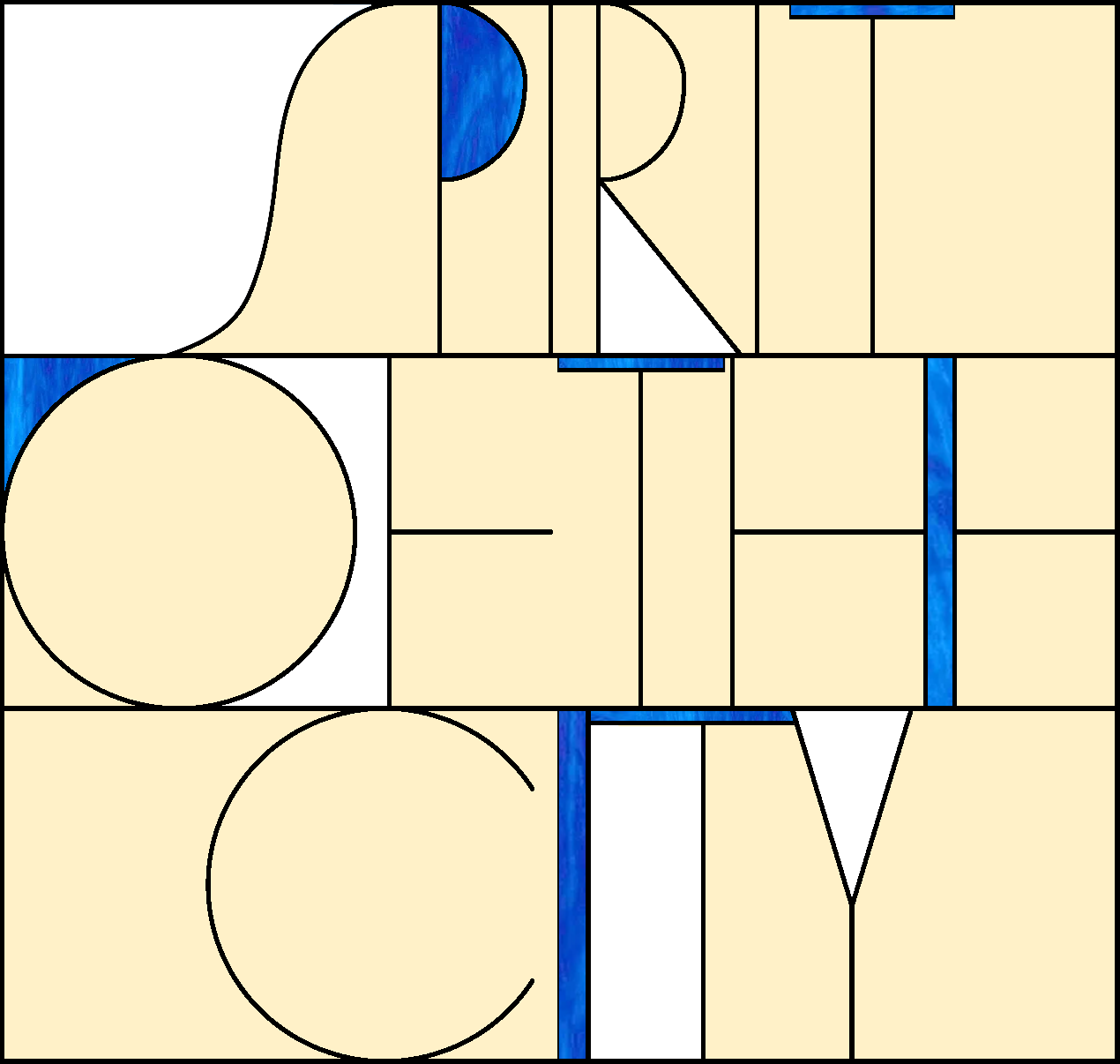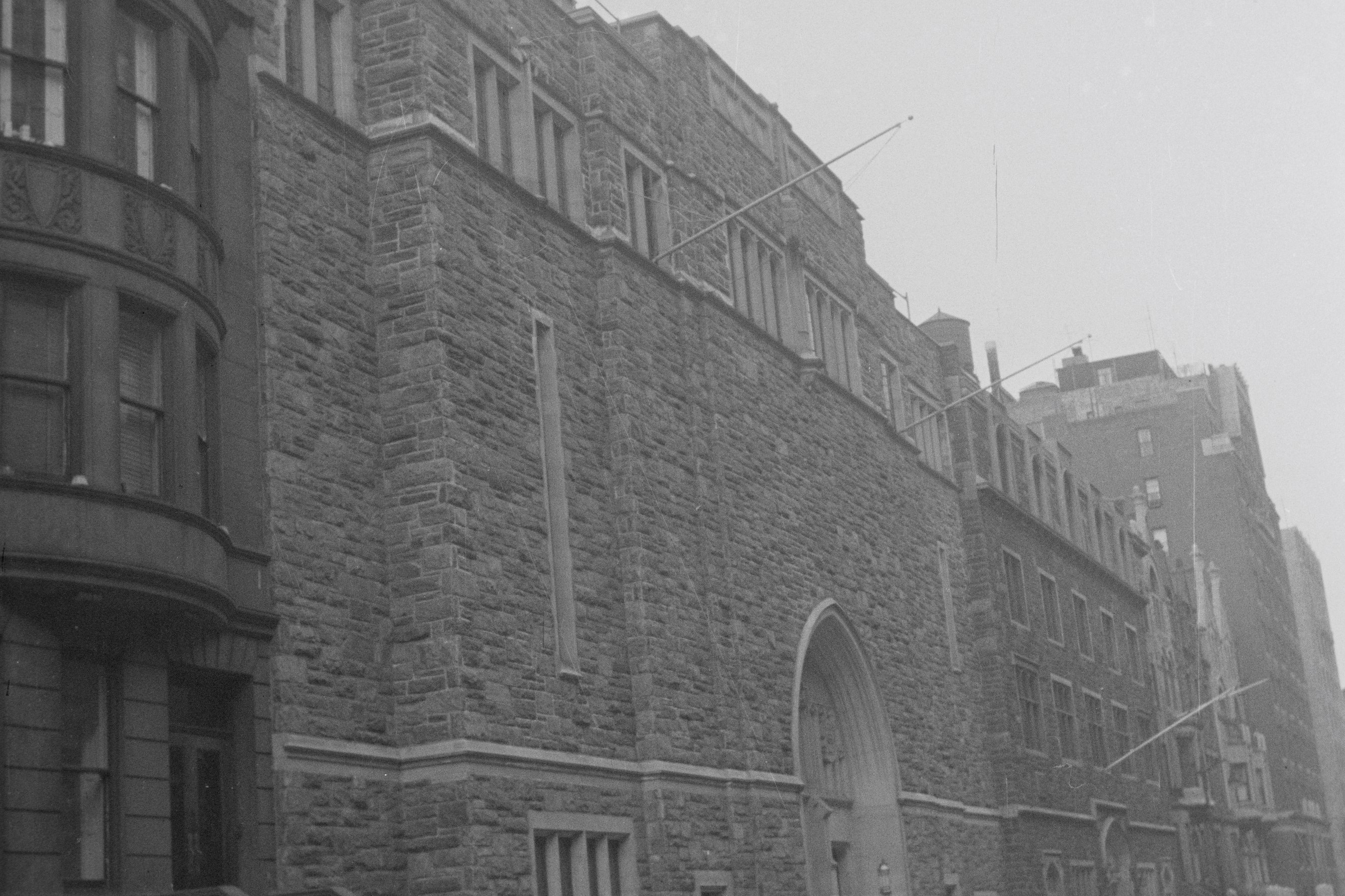
Stephen Wise Free Synagogue
28-36 West 68th Street
by Tom Miller
Both Stephen Wise’s father and grandfather were rabbis. After graduating from City College, he, too, went on to pursue the rabbinate. In 1894 he became assistant rabbi at Congregation B’nai Jeshurun on Madison Avenue. Four years later, after attending the Second Zionist Congress, he became a Zionist, and in 1900 accepted the position of rabbi of Congregation Beth Israel in Portland, Oregon. While there he espoused liberal views about issues like women’s suffrage, labor rights, and interfaith interaction.
In 1905, he was offered the pulpit of Congregation Emanu-El, the most elite of Manhattan synagogues. Wise told the Board he would accept the position with the understanding that he would not be censored–that his sermons would not be subject to pre-approval by the Board. Louis Marshall, secretary to the Board, refused, insisting that the trustees would always have control of the pulpit. Wise walked away from the prestigious position, vowing to create a “free synagogue.”
Wise recruited powerful Jewish New Yorkers to his cause, including Jacob Schiff, Adolf Lewisohn, James Speyer and Henry Morgenthau, Sr. The Free Synagogue began in the Hudson Theater on Times Square. By 1911, the congregation had swelled to 500 members and three brownstones were purchased on West 68th Street. They were used for the school, administration, and facilities like its mental hygiene clinic, opened in 1913. Eventually, the Free Synagogue would acquire several other old houses along the block.
Completed before year’s end, it had the appearance of a medieval fortress.
In its March 1922 issue, Stone magazine reported, “The Free Synagogue is planning the erection of a $250,000 synagogue at 32-44 [sic] West 68th Street, New York.” The trustees had hired the architectural firm of Eisendrath & Horowitz to design the structure. Completed before year’s end, it had the appearance of a medieval fortress. The architects gave the façade touches of Gothic in the arched entrance and the statuary niche at the upper floor. They made their edifice more formidable by cladding it entirely in undressed stone.
Although the congregation now had a superb house of worship, Rabbi Wise continued to celebrate High Holy Day and Sunday morning services in Carnegie Hall to accommodate the immense audiences. He continued his progressive outreach. On November 13, 1934, The New York Times reported that the Free Syngagogue had converted one of its houses, at 50 West 68th Street, for the use of refugees from the Third Reich. It was called the American Jewish Congress House.
Stephen Wise occupied the pulpit of the Free Synagogue until his death on April 19, 1949. The name of the congregation was changed to the Stephen Wise Free Synagogue the following month.
The congregation continued Rabbi Wise’s progressive ideals. A tradition was begun in 1957, for instance–the annual interfaith children’s Passover seder. On April 5, 1971, The New York Times said, “One hundred black and white Roman Catholic and Protestant children sat quietly yesterday morning with 400 Jewish children at tables covered with sparkling white linen and laden with matzoh and other traditional Passover food.”
Rabbi Edward E. Klein explained, “Passover is a festival of freedom. But in a larger sense it symbolizes religious freedom for people of all faiths, colors and creeds.” Sister Margaret Eileen of the St. Paul Apostle School on West 60th Street called the event, “thrilling, a most terrific step forward for interfaith understanding.” The “model seder” was always held a few days before the actual holiday.
The congregation made history the following year in August by hiring the first female rabbi in America, Sally J. Priesand, as assistant rabbi. The New York Times reported, “She will preach, teach, officiate at weddings and funerals and perform other duties as assistant to Rabbi Edward E. Klein.
Rabbi Bretton-Granatoor said he was impressed that the pontiff seemed to be “a real mensch.”
Rabbi Klein was followed in the pulpit here by Rabbi Gary Bretton-Granatoor. Pope John Paul II arrived in New York City on October 4, 1995. A day earlier, The New York Times journalist Clyde Haberman, had interviewed Rabbi Bretton-Granatoor, aware that the two had met in Rome. Rabbi Bretton-Granatoor said he was impressed that the pontiff seemed to be “a real mensch.” He added, “I felt that I was in the presence of a special human being. He was a nice guy.”
On Martin Luther King Day, 2009, the pulpit was turned over to Rabbi Capers Funnye, the chief rabbi of the Beth Shalom B’nai Zaken Ethiopian Hebrew Congregation of Chicago. The New York Times reported that of the 700 in attendance that night, “African-American Jews, largely from Brooklyn, the Bronx and Queens, many of whom had never been in a predominantly white synagogue, made up about a quarter of the audience.” Rabbi Funnye and his wife had given up an invitation to the Presidential Inauguration for this service. (Rabbi Funnye’s cousin, Michelle Obama, was the new First Lady.) The music that night was performed by Joshua Nelson and his Kosher Gospel Band.
Another tradition, started in 1988, was the “Purim spiel,” a specially written musical celebration the inspiration of which was Broadway. In 1992, for instance, it was “The Megillah According to Rodgers & Hammerstein,” followed a few years later by “The Megillah According to the Beatles.” Songs were tweaked for the occasion, like “Don’t you step on my Shushan Jews,” for the Elvis-themed program.
The Stephen Wise Free Synagogue–with its daunting stone façade that might have intimidated even Joshua–is a mighty presence on the West 68th Street block.
Tom Miller is a social historian and blogger at daytoninmanhattan.blogspot.com
Building Database
Be a part of history!
Stay local to support the nonprofit currently at 28-36 West 68th Street:


